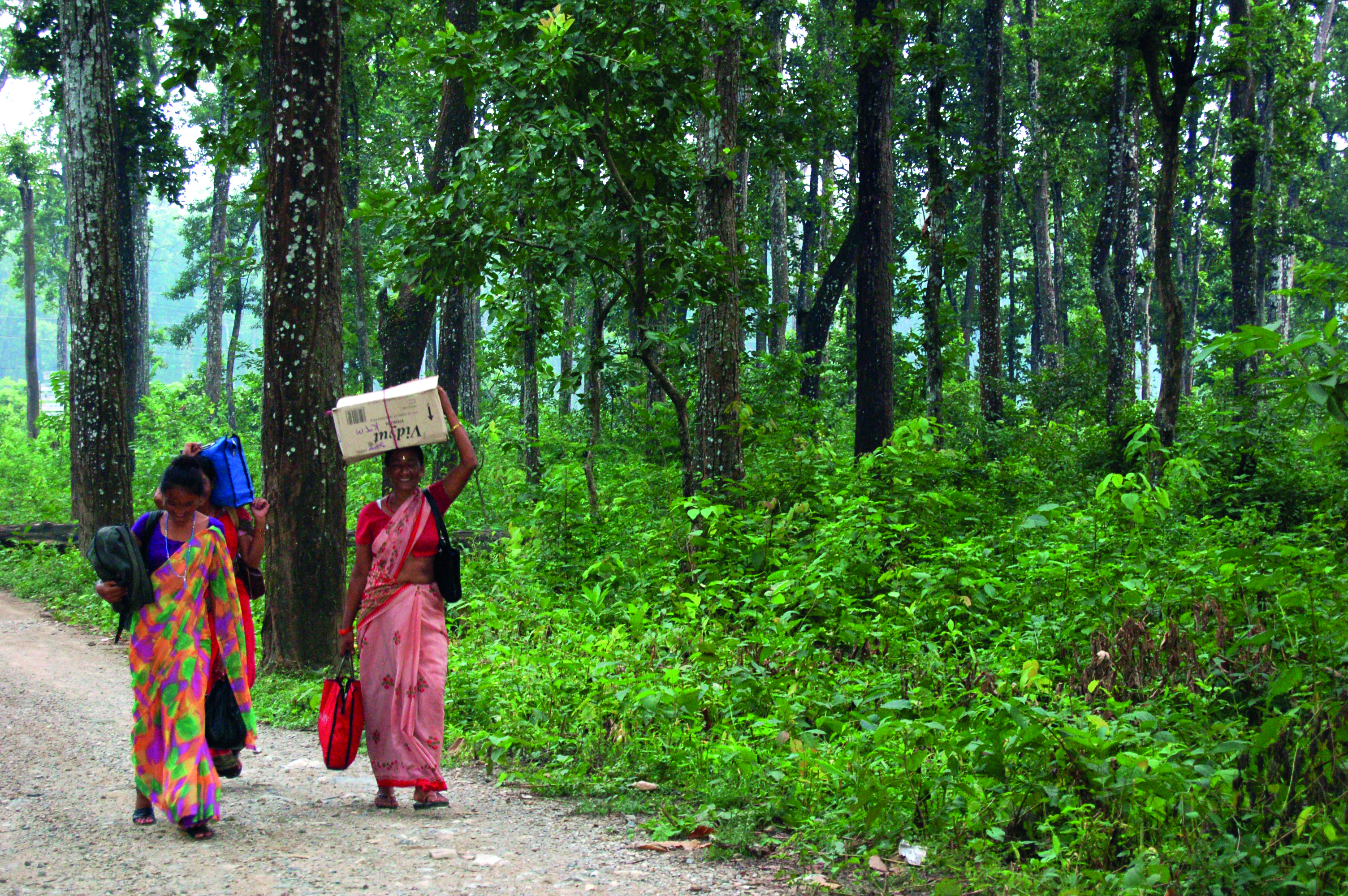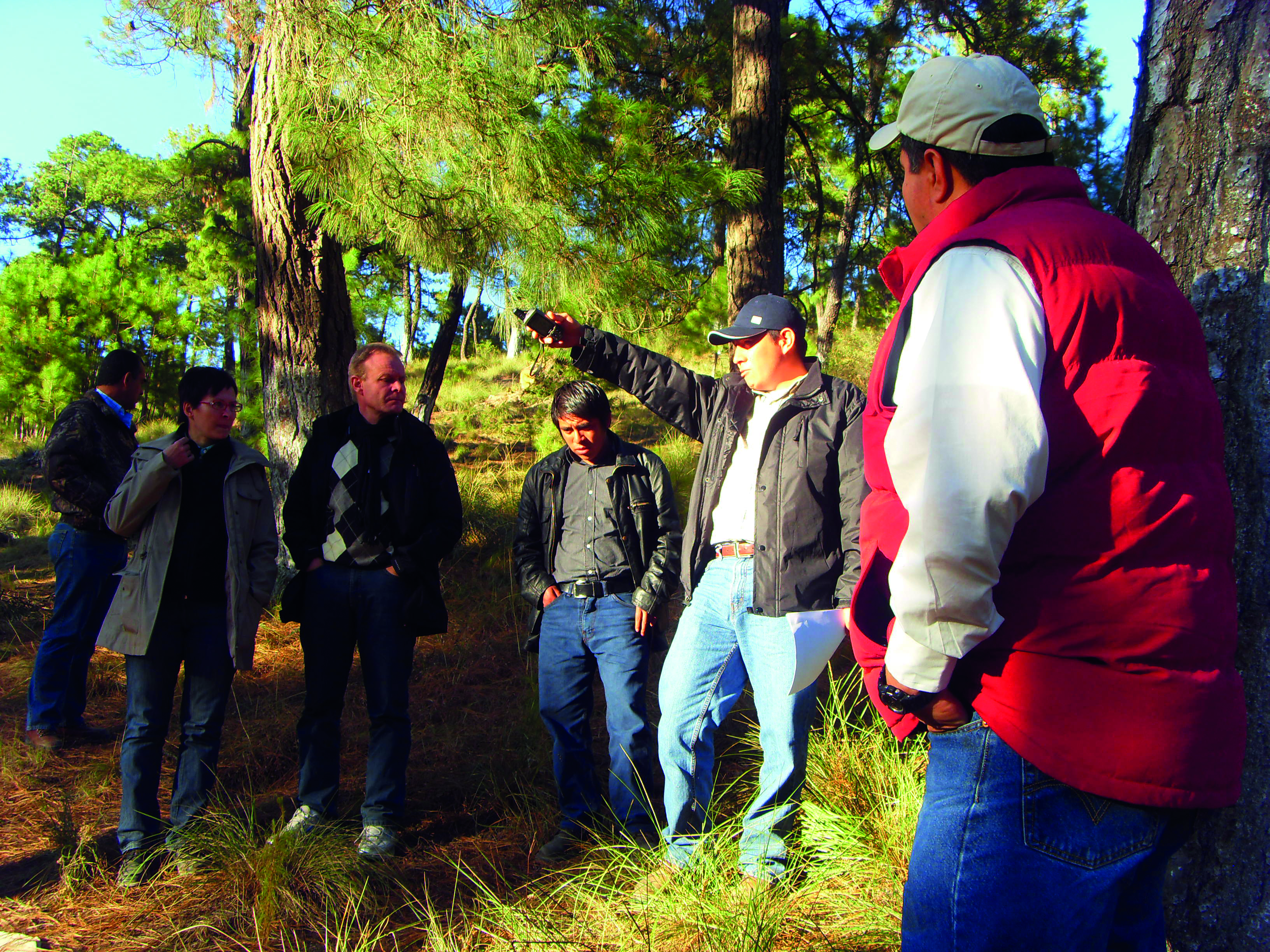What you're buying, when you buy PEFC-certified furniture
What does it mean when you see a PEFC label on a piece of wooden furniture? What, exactly, are you buying?
What you're buying, when you buy PEFC-certified furniture
11 November 2021 Blog
You, like most consumers, are probably concerned with the sustainability of the products that you buy.

We’re not just guessing that by the fact that you’ve wound up on this website about sustainable furniture, and are reading this article. A preference survey conducted by the Sustainable Furnishings Council in 2021 found that 87% of consumers surveyed said they would be willing to pay more for sustainably produced furniture than uncertified furniture, as long as they liked the style.
This means that consumers like you have a big voice in the marketplace, and that your purchasing decisions can influence how retailers and manufacturers source their wood, and how foresters around the world harvest it.
But what does it mean for you, personally? What kinds of practices and businesses are you choosing to support when you buy a piece of furniture that is PEFC certified?
Your purchase of PEFC certified furniture protects forests
At PEFC, it all gets back to the forest. We work with foresters large and small to help them achieve Sustainable Forest Management certification. But what does that mean, in practice?
Sustainable forest management means using forested lands in a way, and at a rate, that maintains their biodiversity, productivity, regeneration capacity and vitality, now and into the future. A sustainably managed forest maintains its potential to fulfil ecological, economic and social functions, at the local and global level, and does not cause damage to other ecosystems. While the exact certification process will vary according to the specific legal and national context, the core of this certification is that any timber extraction is balanced with new growth rates, and the species composition of a particular forest.
When foresters go through the PEFC certification process, they must successfully demonstrate that they are harvesting wood from specific species in such a way that can be sustained over the long term, without reducing the size of the forest or negatively impacting its overall biological diversity. This protects the forest as a long-term provider of essential ecosystem services, such as carbon sequestration and erosion control, and a stable home for the diverse plant and animal species that live there, as well as the human populations that live in and around these forests.
As recently highlighted in the COP 26, clear-cutting of wooded areas to make room for agriculture and cattle grazing is the leading global cause of deforestation. But by obtaining PEFC certification, forest owners make a commitment to manage their forests in a way that is ecologically sound, socially just, and economically viable. Our standards explicitly prohibit any forest conversion that will negatively impact ecologically important areas or destroy high carbon stocks stored in those forests. These standards also require that forest biodiversity be maintained by actively identifying ecologically important land within a harvested forest, including habitats for threatened animal and plant species, and conserving that land.
What this all means is that your choice of furniture that bears the PEFC label is a choice to keep forests standing tall, and the life within them thriving. If you would like a deeper understanding of the technical requirements for certification, you can learn more here.
Choosing PEFC certified furniture is a choice to improve livelihoods
Sustainable forest management certification doesn’t happen overnight. It’s a process that requires a significant degree of time, resources, communication and cooperation to achieve. This may present a barrier to entry for the millions of small, family-owned and community forest owners which represent approximately 20% of forest ownership around the world (IUCN, 2018). Smallholder’s also have different needs, and face different challenges than larger-scale timber operators. But their participation is vital to the cause of sustainable production. Not only do these smallholders manage millions of hectares of forest, but they are often the stakeholders who are in the closest contact with forests, relying on them for their livelihoods and their food security. That’s why smallholder inclusion is so important to PEFC, and why we have made forest certification accessible and attainable to foresters of all sizes. Equity of access is fundamental to our origin as an organization.
In 1999, PEFC was founded by a group of small foresters who were deeply committed to the long term ecological health of the forests that they managed, but felt that the barrier to entry for existing forest certification schemes prohibited small scale forester participation. We sought to provide a practical, cost-effective and flexible path for other foresters that shared the values of our founders. That’s why PEFC introduced the smallholder group certification programme in 2010, which allows individual foresters to associate and formally certify as a group. They therefore share the costs and administrative burden of certification, and enjoy the benefits together.
Today around 1 million small forest owners and managers have become certified through the group certification process. This is proof that when certification is truly available to small-scale, independent foresters, they are eager to get onboard. This is not just due to their own innate desire to protect their forests, but also because certification is good for the livelihoods of these foresters. It opens up new markets, and makes the wood that they harvest compliant with national procurement regulations across the globe.
That’s why PEFC is passionate about equity of access not just for its own sake. Independent foresters are much more likely to be economically vulnerable, and when they are unable to get economic value from the forested land that they own or manage they are much more likely to convert it for agricultural use. This is particularly true in the developing world, where some of the most ecologically diverse and important forests are. Certification gives these independent foresters a real economic incentive to harvest sustainably. Regular and transparent assessments also incentivize them to maintain these sustainable practices, after implementing them. Certification improves livelihoods, and quality of life for populations that are often vulnerable. And when you buy furniture that bears the PEFC label, you are directly contributing to that improvement.
From the forest, to the showroom

When you bring home a beautiful new piece of PEFC certified furniture, you bring home the work of a whole value chain. While that starts in the forest, with selective and sustainable timber harvesting, your new piece of furniture has a history that extends well beyond that. The wood in it has been transported, and cut. It has been processed, and traded. It has been designed into a piece that you found attractive or useful enough to buy, and put up for sale.
PEFC’s work starts at the forest, but we are also there every step of the way after that. The PEFC chain of custody certification ensures that each step of the supply chain has been robustly monitored and independently audited to make sure that certified material is tracked, and not mixed with illegal sources. Every company that handles timber in a certified supply chain also commits to upholding the standards endorsed by the PEFC, and is audited annually to maintain strict compliance.
That means that when you see the PEFC label on a piece of furniture, you can trust that it means the product is truly sustainable.
Choosing PEFC certified furniture means respecting local ownership
We believe that forests and the people who earn a living from them are highly diverse, and a ‘one-size fits all’ approach to sustainable management doesn’t take into account the variation of forests and their unique characteristics, to say nothing of national and economic contexts. What makes sense in Indonesia may not be right for Finland, and the harvesting rate for hardwoods in Canada tells us little about what is sustainable in Gabon.
That’s why PEFC adopts a ‘bottom-up’ or local approach that is adaptable, versatile and cooperative. It’s an inclusive process that works within national forest management systems and respects local knowledge and ownership of forests. We believe in empowering local forest owners and authorities to develop their own standards within the guidelines of the International PEFC framework.
When it comes to the setting of these standards we consult key stakeholders that represent a balanced range of interests, including business and industry, children and youth, forest owners, Indigenous people, local authorities, NGOs, scientific and technological communities, women, and workers and trade unions.
We place local people at the heart of the certification process, and when you choose PEFC certified furniture, you do too.
Brings values together with form and function
It is not lost on us that when you choose a piece of PEFC certified sustainably sourced furniture, you aren’t just choosing sustainability. You’re also choosing furniture. It is a piece that will help shape your home or office environment, and one that you will interact with in a physical way for years to come. PEFC certified furniture comes in all shapes and sizes, from practical and modular wardrobes that you build yourself when moving into your first apartment, to design forward statement pieces that can set the tone for a whole room. And they each carry with them the benefits of sustainability.
At PEFC, we believe strongly that the sustainability of that product is fundamentally a part of the value that it brings into your home. We think of the purchase of sustainable wood not as a way to minimize harm, but as an active good that consumers around the world can do to help protect forests. When you bring that wood into your home, you are also bringing in the improved livelihoods and protected forests that are part and parcel to certification. To us, that adds to the beauty and utility of well-made furniture. It’s a meaningful way to both protect the forest, and to bring it home with you.
The next time you shop for furniture, we encourage you to ask where it came from, and how it was sourced. Look for the PEFC label as proof that wooden furniture was sourced sustainably. And let the stores that you shop from know what this is important to you by raising your voice, and asking for it. It all starts with a simple question: “Can you please show me the pieces you have that are PEFC certified?

